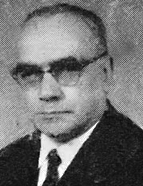

For broader audiences, CP also organised educational editions and oversaw the publication of a series of works by Fialho de Almeida (the subject of his doctoral dissertation), accompanied by extensive critical introductions.
CP authored a volume of História da Literatura Portuguesa [History of Portuguese Literature] dedicated to the Middle Ages (1947, revised edition 1959). He also began publishing, in instalments—as was common at the time—the second volume, covering the 15th and 16th centuries. The first book , which reached over 250 pages, was part of an ambitious project intended to encompass Portuguese literature up to the 20th century.
The model chosen was the same one adopted by Francesco De Sanctis for Italian literature in the final decades of the 19th century, followed by Gustave Lanson for French literature, and later implemented by Menéndez Pidal for Spanish literature—closer in time to CP. After the useful but biased historiography of Teófilo Braga, the serious yet oversimplified didacticism of Joaquim Mendes dos Remédios ( 1911 ), and the extensive, elaborate História Ilustrada da Literatura Portuguesa [Illustrated History of Portuguese Literature], coordinated by Albino Forjaz Sampaio ( 1929 ) but aimed at a limited audience, there was a pressing need for a work grounded in principles of rigour.
The notion that each country is called to define its identity based on the cultural and ethnic traits that distinguish it stems from the nationalist vision of a history of civilisation as articulated by Hippolyte Taine in Philosophie de l’Art ( 1870 ). This explains the path that literary historians are required to navigate, moving between the specificity of each culture and broader linguistic-cultural domains. Such a task demanded sustained and meticulous research capable of unearthing documents, identifying authorship, clarifying contexts, and establishing a periodological framework. Aware of the challenges inherent in the task he had undertaken, CP admitted in the Advertência [Foreword] to the 1959 edition that progress had stalled due to the considerable effort required in “research and criticism,” as well as the “heavy teaching responsibilities” he had to shoulder year after year.
This work is financed by national funds through FCT - Foundation for Science and Technology, I.P, in the scope of the projects UIDB/04311/2020 and UIDP/04311/2020.
